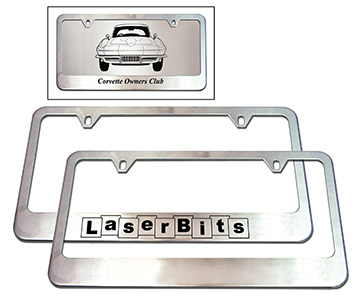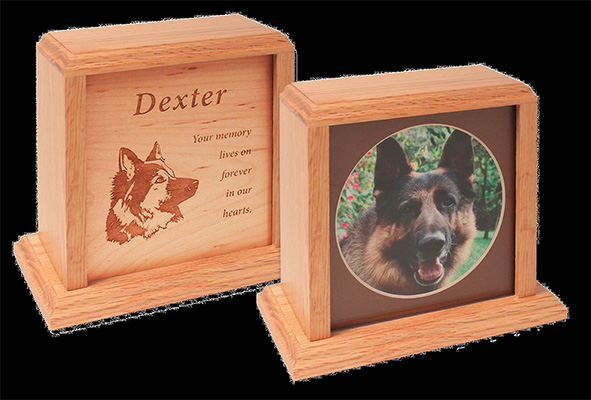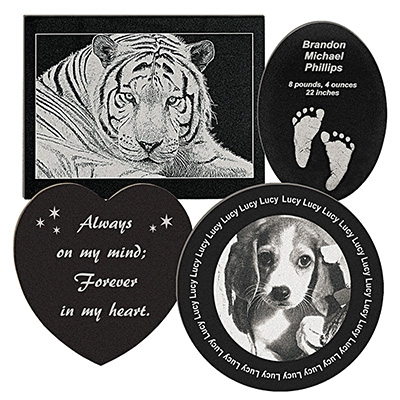Becoming a laser job shop doesn’t just add customers; it benefits your reputation and helps to grow your business. It doesn’t require new skills or equipment because engraving a trophy plate isn’t that different from engraving a barcode on an industrial tool.
Expanding into a Laser Job Shop
Turn Your Existing Customers into a Gold Mine Without New Investments
(Originally published in the June 2014 issue of Rec Review.)
Becoming a laser job shop doesn’t just add customers; it benefits your reputation and helps
to grow your business. It doesn’t require new skills or equipment because engraving a trophy
plate isn’t that different from engraving a barcode on an industrial tool. Like a recognition
business, a laser job shop creates custom products, lasers a variety of materials, and sells to a
variety of markets. You’re 90% there with developing this business. All you have to do is find
the markets. If you look at your customer database, you probably already sell to a variety of
markets, which means you just need to sell a different product to the same customers. Learn
more about your customers to find out what services they need so you can extract more
business from them. A trophy shop owner might say, “I engrave recognition products.” A laser
job shop owner says, “I don’t care if I’m engraving on metal or a plaque or a jet engine fan
blade. It’s all the same.”
Your core products, such as plaques, acrylics, and name badges, bring in a certain amount
of work. Expanding into a laser job shop adds another category to boost your profit without
detracting from your core product income. Doing this also can fill your slow seasons for more
consistent sales, evening out your income. It can reduce the need to seek out new customers.
After all, finding new customers is expensive, but selling more to each customer is an easier
way to increase income. Offering new products lets you grow your business with your existing
customers and new ones.



Do your customers have businesses or hobbies related to cars? Are they pet owners or veterinarians? These are some of the questions that can help you find markets for new products you can sell to existing customers, such as license plate frames and pet memorials. These products are all sold through LaserBits.
With existing customers, your reputation precedes you, allowing you to build on it. If you
already do awards for a company, they already know they can trust you to laser mark their
parts; you don’t have to spend time convincing them of your reputation and trustworthiness.
With existing customers, it’s a matter of letting them know what services you can offer. Don’t
just send an e-mail. Engage them in a conversation, whether in person or by phone, to mine
them for additional opportunities.
What services can you offer them? Think about what you can do with your laser and what
materials you can laser. Lasers can cut and engrave, and they can work with a variety of
materials, including wood, plastic, acrylic, leather, stone, paper/cardboard, rubber, coated
metals, bare metal with a marking material such as CerMark®, glass and crystal, shell, cork,
and tile and ceramics. Thinking about these capabilities can help you come up with other work
you can do for customers, such as cutting rubber gaskets or paper.
You also need to be aware of materials you cannot work with. If a customer brings something
to you for marking or cutting, find out what is in it before putting in your laser. When lasered, some products generate dangerous gases or explode.
Examples include the polyvinyl chloride (PVC) found in
certain foams or sign vinyl; polycarbonates like Lexan™;
and flammable materials, such as butane lighters or
compressed gas bottles. If you can’t figure out what a
product is made of, don’t put it into your laser. Know it
before you cut it.

Expand by Market
The two main markets you should start thinking about are
industrial and decorative. Industrial jobs include cutting
stencils, parts marking, gasket cutting, creating control
panels, tool marking, stamp making, acrylic fabrication
(such as point-of-purchase displays), and cutting model
part kits. If you don’t have customers with these needs,
find distributors in associated markets. For instance,
to market control panels, offer your services to switch
distributors. In the case of parts marking, pitch your
services to the companies that anodize or coat these parts.
Instead of creating individual stamps for customers, you
could be creating inspection stamps for a manufacturer, or
find a club that does model airplanes and offer to cut their
AutoCAD files of planes from balsa wood.
Decorative market options include photo engraving,
identification tags and bracelets, memorials, and garden
and tree markers. Identification tags are popular
for schools and clubs, but also to inform emergency
responders about a person’s medical needs or emergency
contacts; market ICE bracelets (bracelets engraved with
the wearer’s “in case of emergency” contact) to athletic
groups, for instance. Talk to veterinarian offices about
creating pet memorials. These all offer opportunities for
many sales instead of just one.
Expand by Material
Think about the materials you can cut and engrave to come up with products you can make
and groups to which you can sell them.
Plastics can be turned into stencils for scrapbooking or nail art, bookmarks for book clubs or
libraries, name badges, custom holiday ornaments, or signs.
Metal products that can be engraved include machine parts, knife or sword blades, restaurant
tools, stethoscopes, and medical and dental instruments. If you find a knife-sharpening
service, ask to market to its customers, such as chefs who value their knives above all other
tools. For stethoscopes, market to doctor’s offices, nurses associations, and a variety of other
healthcare organizations, offering to put the owner’s name on the device.
Glass engraving opportunities include wine and liquor bottles, industrial glass, CerMark
on glass, and cabinet windows. Liquor distributors may hire you to engrave special bottles
for customers or gift boxes; laser engraving bottles does not ruin the liquor inside, contrary
to popular belief. The market for industrial glass is difficult to break into, but you can find
scientific-glass distributors, for instance, and start there. If you can engrave on stemware, you
can engrave on scientific glass. Cabinet makers won’t want to buy a laser, but you can offer to
do their glass in your shop.
Ceramics and bricks can be engraved. Tiles can have photos or text added for display outdoors or
in homes. Donor tiles and bricks used for fundraisers for hospitals, schools, nonprofits, and other
groups. However, engraving bricks can be messy, so consider steering customers toward tiles.
Hot Market
Hot markets include machined metal parts, anything
pet related, memorials, firearms, and religious articles.
Machined metal parts can become a whole business for
you, and gun dealers, smiths, and manufacturers are
good places to start when looking to break into firearm
engraving. Before marketing firearm engraving, find
out what ordinances affect you. In Illinois, where ARA
is headquartered, state police confirmed that a shop
owner must have a firearm owner’s identification card
to take possession of a customer’s firearm long enough
to engrave it. Recognition Review will explore these
legalities in a future issue.
The Next Step
Pick an application that you can peruse and put it on a
Post-It note to remind yourself. Allocate time in your
schedule to look through your customer database or
online for people to whom you can market one of these
services. If you start with existing customers, your
reputation paves the way, and if you’re serious about
expanding into laser job shop services, consider adding
“laser engraving” to your company’s name to open
discussions about what you can do for customers. You
will have to educate your customers. Talk to them about
your capabilities and, even if you can’t offer e-commerce,
post photos on your website to educate them about what
you can do.
But first, you need to educate yourself. Try new processes,
take full advantage of your laser, find out what materials
you can engrave and cut, and get training to advance your
laser skills.
This article is based on a seminar presented by Mike Fruciano at the
2014 ARA International Awards Market in Las Vegas, NV. Fruciano coowns
LaserBits, an ARA supplier that opened its doors in 1998. With 14
employees, LaserBits has locations in Phoenix, AZ, and Columbus, OH.
Fruciano has a degree in electronics engineering and has travelled the
world developing, marketing, and selling technical products. A frequent
industry writer and speaker, Fruciano was honored as ARA Speaker of
the Year in 2004. Fruciano has trained laser owners around the world
through his Web-based training site, Laser University, and through
The Laser Clinic, which visited 11 cities in North America last year. Turn
to page 63 to see upcoming Laser Clinic details. Fruciano is active with
local cancer support organizations The Arizona Wellness Center and
Singleton Moms, an outreach for single moms with cancer. His hobbies
include golf, cycling, and motorcycles. Visit www.laserbits.com and
www.laseru.com to learn more.